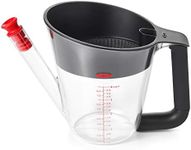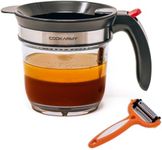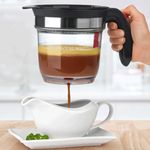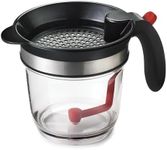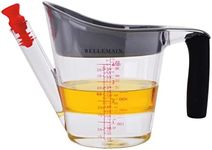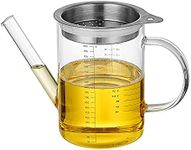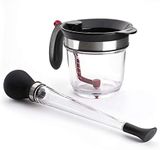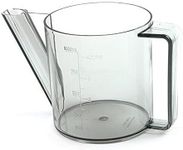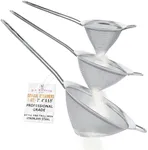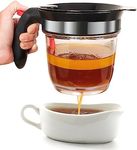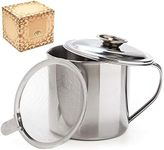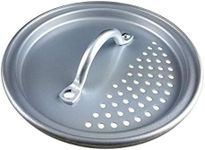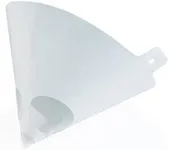Buying Guide for the Best Gravy Fat Separator
Choosing the right gravy fat separator can make a significant difference in your cooking experience, especially when it comes to making healthier and tastier gravies and sauces. A gravy fat separator is a kitchen tool designed to separate fat from meat juices, allowing you to pour off the flavorful liquid while leaving the fat behind. When selecting a gravy fat separator, it's important to consider several key specifications to ensure you get the best fit for your needs.CapacityCapacity refers to the amount of liquid the separator can hold. This is important because it determines how much gravy or sauce you can process at one time. Capacities typically range from 2 to 4 cups. If you often cook large meals or entertain guests, a larger capacity separator would be more convenient. For smaller meals or occasional use, a smaller capacity should suffice.
MaterialGravy fat separators are commonly made from plastic, glass, or stainless steel. The material affects durability, heat resistance, and ease of cleaning. Plastic separators are lightweight and often dishwasher safe, but they may not be as durable as glass or stainless steel. Glass separators are heat-resistant and allow you to see the separation process, but they can be fragile. Stainless steel separators are durable and heat-resistant, but they can be heavier and more expensive. Choose a material based on your preference for durability, ease of use, and maintenance.
Spout DesignThe spout design is crucial for effectively separating fat from the liquid. There are two main types: bottom spout and top spout. Bottom spout separators allow the liquid to be poured from the bottom, leaving the fat on top, which can be more efficient and precise. Top spout separators pour the liquid from the top, which can be simpler but may not be as effective in separating all the fat. Consider how precise you need the separation to be and choose a spout design that matches your cooking style.
StrainerA strainer is an additional feature that helps remove solid particles from the liquid before separation. This is important for achieving a smooth gravy or sauce. Some separators come with built-in strainers, while others may require a separate strainer. If you frequently deal with chunky liquids, a built-in strainer can save time and effort. Ensure the strainer is fine enough to catch small particles but not so fine that it clogs easily.
Ease of CleaningEase of cleaning is an important consideration, especially if you plan to use the separator frequently. Some models are dishwasher safe, which can save time and effort. Others may require hand washing. Consider how much time you are willing to spend on cleaning and whether you prefer the convenience of a dishwasher-safe model. Additionally, look for separators with fewer parts and smooth surfaces to make cleaning easier.
Heat ResistanceHeat resistance is important because you will be dealing with hot liquids. A heat-resistant separator can withstand high temperatures without warping or breaking. Glass and stainless steel separators typically offer better heat resistance compared to plastic ones. If you often work with very hot liquids, opt for a separator made from heat-resistant materials to ensure safety and durability.
